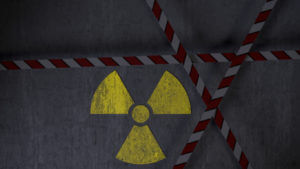
The Bikini Atoll in the Marshall Islands is one of the most infamous sites of nuclear testing in history. Located in the Pacific Ocean, its once-pristine islands became a testing ground for nuclear weapons between 1946 and 1958.
Today, the atoll stands as a chilling reminder of how those tests have affected the environment, public health, and global politics.
Let us explore how the nuclear experiments at Bikini Atoll have had long-lasting consequences—and what they mean for humanity.
What Happened at Bikini Atoll
Bikini Atoll in the Marshall Islands consists of 23 islands. It became part of U.S. territory after World War II, and the U.S. selected it as a nuclear testing site shortly after the war.
Between 1946 and 1958, the U.S. conducted 23 nuclear tests there, ranging in size and destructive capacity. These included some of the largest explosions in human history, such as the 1954 Castle Bravo test.
Castle Bravo was the most powerful hydrogen bomb tested by the U.S. It was 1,000 times more powerful than the atomic bombs dropped on Hiroshima and Nagasaki. The fallout from this explosion affected nearby islands and spread radioactive particles far beyond the test zone.
The Impact of Nuclear Testing on Bikini Atoll
The nuclear tests permanently changed Bikini Atoll. Understanding the effects of these actions is crucial to recognizing the broader implications of nuclear weapons testing.
Environmental Devastation
The explosions vaporized entire islands, leaving large craters in their place. For example, the Castle Bravo test left a massive crater under the lagoon that remains visible today. Beyond the immediate physical damage, radioactive contamination made the land uninhabitable.
Plants and wildlife suffered catastrophic consequences. The radiation has poisoned the soil, preventing most vegetation from thriving. Marine life in the surrounding water was also severely affected, with local ecosystems experiencing decades of disrupted biodiversity.
Impact on Human Health
Residents of Bikini Atoll were asked to leave their homes before testing began, but they were promised they could return later.
Unfortunately, that promise was never fulfilled. Islanders attempted to return decades later but were forced to relocate due to unsafe radiation levels.
Radiation exposure led to long-term health problems for Bikinians and other Marshallese who were exposed to fallout. These problems include higher rates of cancers such as thyroid cancer, leukemia, and other radiation-related illnesses. Radioactive particles from the tests also spread globally, increasing health risks beyond the Marshall Islands.
The Strain on Marshallese Communities
For generations, Bikini Islanders have faced displacement and disrupted livelihoods. Forced off their ancestral lands, they were relocated to other islands in the Marshall Islands, but these locations were often poorly suited for supporting entire communities.
Today, radiation and displacement continue to cause emotional distress. Families and cultural traditions have been deeply affected, and some Bikinians still struggle with food insecurity and the loss of their cultural heritage.
Global Fallout
The atmospheric nuclear tests conducted at Bikini Atoll released radioactive particles into the atmosphere, which eventually traveled worldwide.
Studies show that fallout from these tests contributed to global radiation exposure. This highlights the far-reaching consequences of nuclear weapons testing and underscores the need for strict international regulations.
What Is the Radiation Exposure Compensation Act
The Radiation Exposure Compensation Act (RECA) is a federal program established by the United States government in 1990 to provide financial compensation and acknowledgement to individuals who suffered health consequences due to exposure to harmful radiation.
RECA serves as a critical mechanism for addressing the long-term health impacts inflicted on workers, nearby residents, and others who were unwittingly subjected to dangerous levels of radiation.
Under RECA, eligible individuals include:
- Those who lived downwind of nuclear test sites, known as “Downwinders®.”
- Uranium miners and millers, ore transporters, and others exposed during specific periods.
The program outlines strict criteria for eligibility, including geographic location, duration of exposure, and documented diagnoses of radiation-related illnesses such as certain cancers and chronic diseases.
The compensation amount is $150,000, Tax-Free for downwind residents. Family members such as spouses, children, or grandchildren can also claim compensation on behalf of their deceased loved one.
Get Compensation for Nuclear Testing Done in Bikini Atoll in the Marshall Islands
If you or someone you know suffered from radiation exposure, do not hesitate to seek help from the Cancer Benefits Center for Downwinders®. We have a team of providers who can advocate for justice and provide the support you need. We can help you determine your eligibility and file a claim on your behalf.
If you want to learn more about how we can help you, you can call our compassionate staff toll-free at 1 (855) 631-7197. Our lines are open 24/7. You may also fill out our online form to apply for Downwinders®. Our friendly staff is waiting to hear from you!
